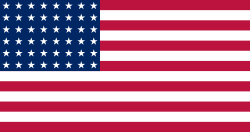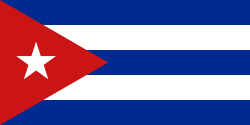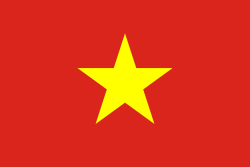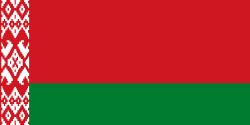Halil Mutlu
| Halil Mutlu | |
|---|---|
(c) President.az, CC BY 4.0 | |
| Narození | 14. července 1973 (50 let) Kardžali |
| Povolání | vzpěrač |
| Některá data mohou pocházet z datové položky. | |
| Přehled medailí | ||
|---|---|---|
| zlato | LOH 1996 | váha do 54 kg |
| zlato | LOH 2000 | váha do 56 kg |
| zlato | LOH 2004 | váha do 56 kg |
| Mistrovství světa ve vzpírání | ||
| stříbro | MS 1993 | váha do 54 kg |
| zlato | MS 1994 | váha do 54 kg |
| stříbro | MS 1995 | váha do 54 kg |
| zlato | MS 1998 | váha do 56 kg |
| zlato | MS 1999 | váha do 56 kg |
| zlato | MS 2001 | váha do 56 kg |
| zlato | MS 2003 | váha do 62 kg |
Halil Mutlu (* 14. červenec 1973 v Postniku, Bulharsko jako Huben Hubenov), je bývalý turecký vzpěrač. Je jedním ze čtyř vzpěračů, kteří třikrát vyhráli Olympijské hry. Získal pět zlatých medailí na mistrovství světa a devět zlatých na mistrovství Evropy a dvacetkrát překonal světový rekord v hmotnostních kategoriích do 52 kg, 54 kg a 56 kg.
Halil Mutlu měl v dubnu roku 2005 po mistrovství Evropy v Sofii pozitivní dopingový test na steroid nandrolon. Od Mezinárodní vzpěračské federace dostal dvouletý distanc, který vypršel 20. dubna 2007[1].
Reference
- ↑ ČTK. Vzpěrač Mutlu dostal za doping dvouletý trest. Sport online - internetový magazín deníku Sport [online]. 20051206 [cit. 20080903]. Dostupné v archivu pořízeném dne 2007-12-16. ISSN 1214-357X.
Externí odkazy
 Obrázky, zvuky či videa k tématu Halil Mutlu na Wikimedia Commons
Obrázky, zvuky či videa k tématu Halil Mutlu na Wikimedia Commons - Halil Mutlu v databázi Olympedia (anglicky)
Média použitá na této stránce
Olympic Rings without "rims" (gaps between the rings), As used, eg. in the logos of the 2008 and 2016 Olympics. The colour scheme applied here was specified in 2023 guidelines.
Olympic Rings without "rims" (gaps between the rings), As used, eg. in the logos of the 2008 and 2016 Olympics. The colour scheme applied here was specified in 2023 guidelines.
Flag of Second Polish Republic and later People's Republic of Poland in period from March 29, 1928 to March 10, 1980. Red shade used here is HTML "vermilion" #E34234. Proportion 5:8.
Flag of Second Polish Republic and later People's Republic of Poland in period from March 29, 1928 to March 10, 1980. Red shade used here is HTML "vermilion" #E34234. Proportion 5:8.
(c) I, Cmapm, CC BY-SA 3.0
The flag of the Soviet Union (1955-1991) using a darker shade of red.
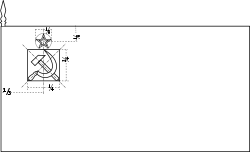
(c) I, Cmapm, CC BY-SA 3.0
The flag of the Soviet Union (1955-1991) using a darker shade of red.

US Flag with 48 stars. In use for 47 years from July 4, 1912, to July 3, 1959.
Flag of Iran. The tricolor flag was introduced in 1906, but after the Islamic Revolution of 1979 the Arabic words 'Allahu akbar' ('God is great'), written in the Kufic script of the Qur'an and repeated 22 times, were added to the red and green strips where they border the white central strip and in the middle is the emblem of Iran (which is a stylized Persian alphabet of the Arabic word Allah ("God")).
The official ISIRI standard (translation at FotW) gives two slightly different methods of construction for the flag: a compass-and-straightedge construction used for File:Flag of Iran (official).svg, and a "simplified" construction sheet with rational numbers used for this file.
Chinese Taipei Olympic Flag. According to the official website of Chinese Taipei Olympic Committee, Blue Sky(circle) & White Sun(triangles) above the Olympic rings is neither the National Emblem of the Republic of China, nor the Party Emblem of Kuomintang (KMT), but a design in between, where the triangles do not extend to the edge of the blue circle, as registered at International Olympic Committee in 1981 and digitally rendered in 2013. Besides, the blue outline of the five-petaled plum blossom is broader than the red one. Moreover, the CMYK code of the blue one and the Blue Sky & White Sun is "C100-M100-Y0-K0", and different from the Olympic rings (C100-M25-Y0-K0). Note that it's the only version recognized by IOC.
bendera Indonesia
Autor: Dragovit (of the collage), Licence: CC BY-SA 4.0
Both national flags of Austro-Hungary, the collage of flags of the Cisleithania (Habsburg Monarchy) and the Transleithania (Kingdom of Hungary)
Flag of the Germans(1866-1871)
Flag of the Germans(1866-1871)
National flag and merchant ensign of Germany from 1933 to 1935.
National flag and merchant ensign of Germany from 1933 to 1935.
Flag of South Korea from 21 February 1984 to 15 October 1997, when the exact colors were specified into their shades.
Autor: Scroch, Licence: CC BY-SA 3.0
Flag of Bulgaria (1971-1990). Flag of Bulgaria with Bulgarian coat from 1971.
this is the flag of the Soviet Union in 1936. It was later replaced by File:Flag of the Soviet Union (1955-1980).svg.
(c) President.az, CC BY 4.0
Presidents of Azerbaijan and Turкiye attended opening of first stage of Dost Agroparк smart agricultural complex in Zangilan







